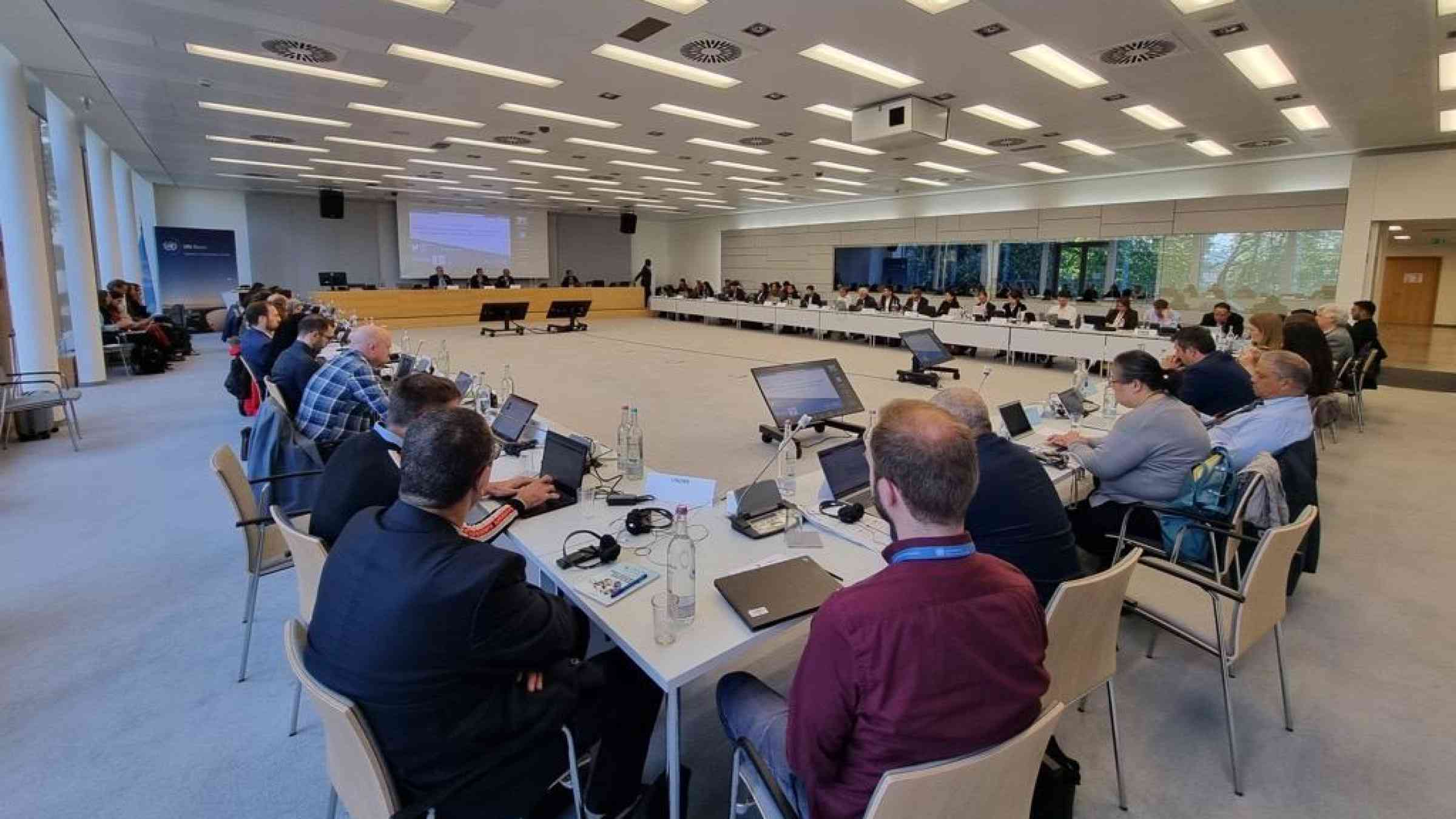
Bonn, 8 May 2023
Six months after an initial workshop, more than 100 experts representing 30 countries and 20 international agencies came together in Bonn last week for a second technical workshop, Validation of the prototype for the new hazardous events and disaster losses and damages tracking system.
These past months have seen numerous disasters around the world – catastrophic earthquakes in Türkiye and Syria, flooding in New Zealand and in Pakistan, and the longest-lasting cyclone on record, Cyclone Freddy, in Southern Africa, amongst many others. These events serve as a reminder of the urgency of tracking losses and damages.
“Having a clear understanding of losses is one of the defining components of our understanding of risk,” said UNDRR’s Animesh Kumar, Head of the Bonn Office, opening the workshop.
“The Sendai Framework and the SDGs have strengthened this understanding through a big data revolution in disaster risk management.”
“We are living in a more complex world – the complexity of interconnected risks is much more than it used to be,” said Rajesh Sharma of UNDP’s Crisis Bureau. “There are risks and uncertainties that we face and that we are going to face in the future; so this workshop is quite timely.”
Building on DesInventar’s progress
At November’s Technical Expert Forum 2022, delegates proposed the development of a system that would address new data needs and adapt to future needs.
The new system builds on the progress to-date on existing systems such as DesInventar, which has tracked disaster losses since 1994 based on information from country-owned data sources.
Participants were given a presentation of the prototype of a new system – along with examples of possible elements that could be incorporated – and were asked to provide feedback and advice on what features and capabilities would be most useful.
The new system, the experts agreed, should be modular – so that it could be useful in contexts with minimal capacity and expertise, while offering the possibility of expansion and more advanced complexity. It should also be flexible, so that it could be adapted to individual country contexts, and digital maturity, and have sufficient interoperability to integrate a range of data sources. It should be scalable, across different focal areas, geographic regions, and themes.
Kumar reminded the experts in attendance that while the event is described as a validation workshop, the outcome would not be a simple yes-no vote, but rather the beginning of an ongoing process of continual feedback, improvement, customization and adaptation to an ever-changing situation.
“We don’t want to wait for the full system to be in place, because there is no perfect, full system.” he said. “We will build it as we move… because perfection is not a stage: it is a process.”
Adapting to new needs
One pressing new need for data is as part of early warning systems. WMO Scientific advisor James Douris spoke of the necessity of verifiable, quantified, transparent and useful information and data on hazards and their impacts.
“It has been a known challenge in this community for decades to know how to quantify the impacts or effects of hazards,” he said.
This system would provide governments with a tool to identify impacts, to attribute them to hazards, and to describe both hazards and economic analysis using a common language.
FAO anticipatory action specialist Wirya Khim explained how FAO uses data to establish trigger mechanisms for anticipatory action – using historical data to forecast the impacts of events such as drought, and to initiate preventative measures to avoid humanitarian crises.
Complexity and modularity
Anwar Baksh, from Trinidad and Tobago’s Planning and Development Office, described how a modular approach with standardised data collection could be used to identify localised risks.
“We can hotspot impacts, we can hotspot losses, and then coordinate a response for the entire population,” he said.
Since the Caribbean country adopted this approach, accounting for losses and damages has become much more precise.
Paul Davis, Chief Meteorologist of the United Kingdom’s Met Office, said that an understanding of the cost of disaster losses would also be useful in calculating the cost benefits of risk reduction.
“The database will also help us to understand the benefit of the investment, and therefore to project where there are still gaps.”
During the coming months the prototype systems will be finalized and piloted – especially for use by developing countries – and development of the new system itself will begin, based on the expert advice from the workshops.